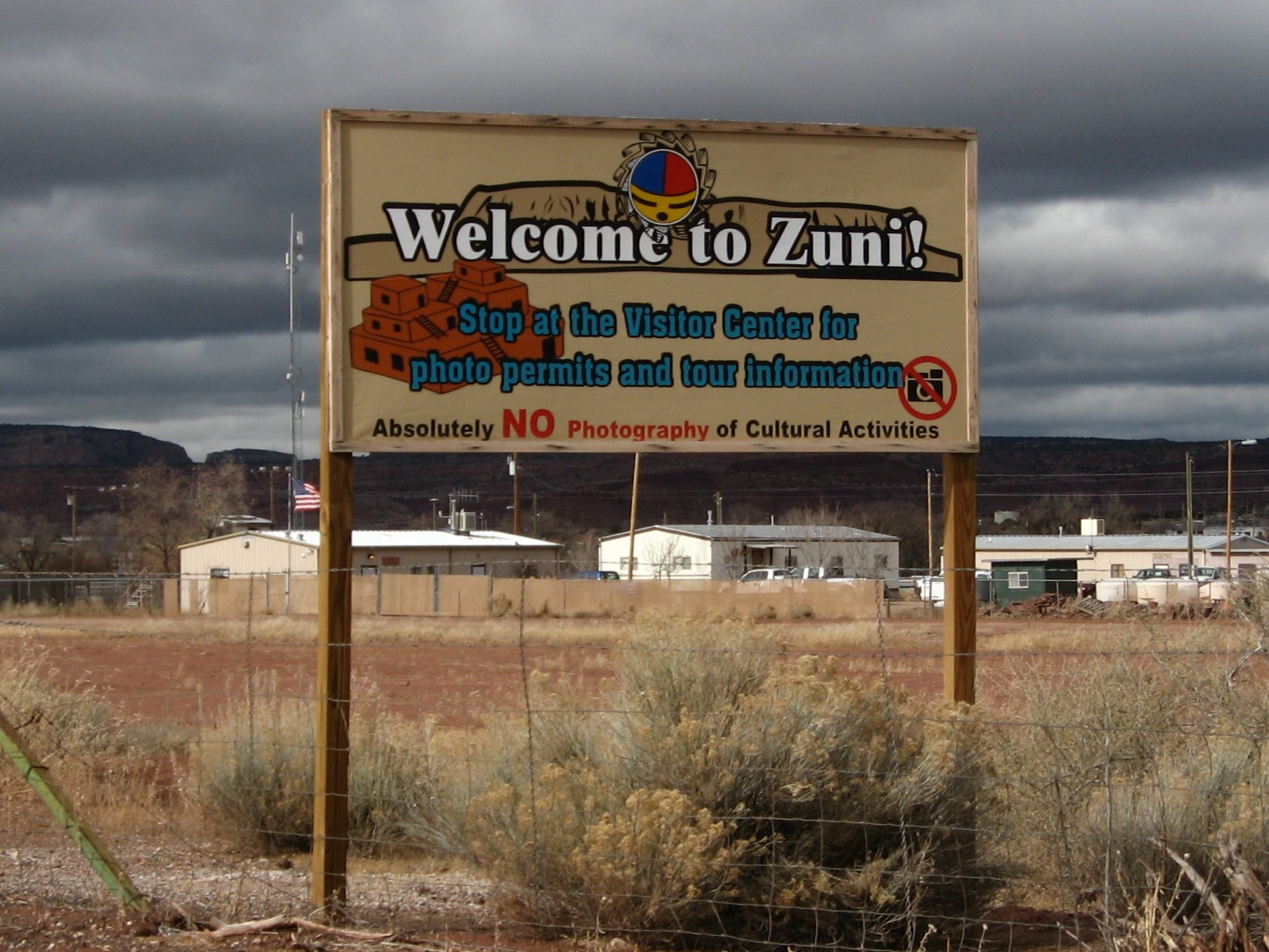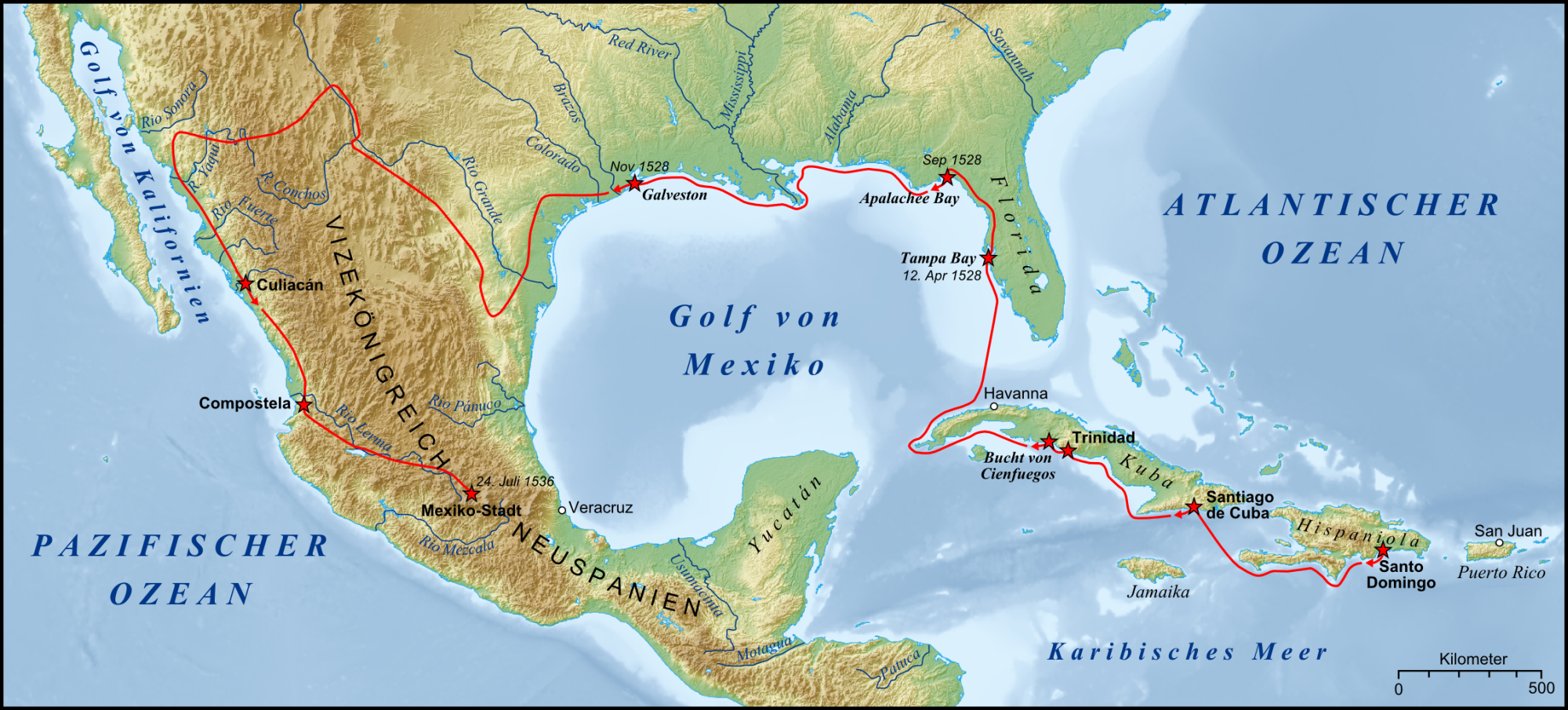|
Pueblo Of Zuni
The Zuni Indian Reservation, also known as Pueblo of Zuni, is the homeland of the Zuni tribe of Native Americans. In Zuni language, the Zuni Pueblo people are referred to as A:shiwi, and the Zuni homeland is referred to as Halona Idiwan’a meaning Middle Place. Location The reservation lies in the Zuni River valley and is located primarily in McKinley and Cibola counties in western New Mexico, about west of Albuquerque. There are also several smaller non-contiguous sections in Apache County, Arizona, northwest of the city of St. Johns. The main part of the reservation borders the state of Arizona to the west and the Ramah Navajo Reservation to the east. The main reservation is surrounded by the Painted Cliffs, the Zuni Mountains, and the Cibola National Forest. The reservation's total land area is 723.343 sq mi (1,873.45 km²). As noted above, the Zuni Tribe also has land holdings in Apache County, Arizona, and Catron County, New Mexico, that do not border the m ... [...More Info...] [...Related Items...] OR: [Wikipedia] [Google] [Baidu] |
Indian Reservation
An Indian reservation is an area of land held and governed by a federally recognized Native American tribal nation whose government is accountable to the United States Bureau of Indian Affairs and not to the state government in which it is located. Some of the country's 574 federally recognized tribes govern more than one of the 326 Indian reservations in the United States, while some share reservations, and others have no reservation at all. Historical piecemeal land allocations under the Dawes Act facilitated sales to non–Native Americans, resulting in some reservations becoming severely fragmented, with pieces of tribal and privately held land being treated as separate enclaves. This jumble of private and public real estate creates significant administrative, political and legal difficulties. The total area of all reservations is , approximately 2.3% of the total area of the United States and about the size of the state of Idaho. While most reservations are small c ... [...More Info...] [...Related Items...] OR: [Wikipedia] [Google] [Baidu] |
Catron County, New Mexico
Catron County is a county in the U.S. state of New Mexico. As of the 2010 census, the population was 3,725, making it New Mexico's third-least populous county. Its county seat is Reserve. Catron County is New Mexico's largest county by area. History Human settlement in the Catron County region dates to some of the earliest in the Americas. During the Clovis period, between 10999 BC and 8000 BC, and Folsom period, between 7999 BC and 5999 BC, the Ake Site was occupied near Datil.(ndNational Register of Historic Places - Catron County, New Mexico Retrieved June 13, 2007. Bat Cave, near Horse Springs, was occupied around 3,500 BC. The Mimbres culture was expressed by the Mogollon people. They lived throughout the Catron County area from AD 1000 to 1130. Their art is renowned for its beauty. In the 16th century, Spanish explorers and colonists came to the region, declaring it in 1598 to be part of Santa Fé de Nuevo México, a province of New Spain in the Americas. The prov ... [...More Info...] [...Related Items...] OR: [Wikipedia] [Google] [Baidu] |
Zuni Public Schools
Zuni Public School District (ZPSD) is a school district headquartered in the Zuni Pueblo census-designated place of unincorporated McKinley County, New Mexico, United States. It includes sections in Cibola County and McKinley County (including Zuni Pueblo and Black Rock). History Created on July 1, 1980, it was the first tribally controlled public school system in the United States. The last school district creation, prior to that of Zuni, occurred in 1950. Zuni School District, which largely coincides with the Zuni Indian Reservation, became the 89th school district in New Mexico. The initial prospective enrollment was 1,800, with 98% of them being Zuni people. Hayes Lewis, the acting superintendent, stated that the reason why the Zuni Pueblo community decided to leave the Gallup-McKinley County Schools system is because the Zuni people wanted to make their own educational decisions, and a Zuni had never been elected to the school board of the previous district. The Zuni peopl ... [...More Info...] [...Related Items...] OR: [Wikipedia] [Google] [Baidu] |
University Of New Mexico
The University of New Mexico (UNM; es, Universidad de Nuevo México) is a public research university in Albuquerque, New Mexico. Founded in 1889, it is the state's flagship academic institution and the largest by enrollment, with over 25,400 students in 2021. UNM comprises twelve colleges and schools, including the only law school in New Mexico. It offers 94 baccalaureate, 71 masters, and 37 doctoral degrees. The main campus spans in central Albuquerque, with branch campuses in Gallup, Los Alamos, Rio Rancho, Taos, and Los Lunas. UNM is classified among "R1: Doctoral Universities – Very high research activity", and spent over $243 million on research and development in 2021, ranking 103rd in the nation. UNM's NCAA Division I program ( FBS for football) offers 16 varsity sports; known as the Lobos, the teams compete in the Mountain West Conference and have won national championships in skiing and cross country running. The official school colors are cherry and ... [...More Info...] [...Related Items...] OR: [Wikipedia] [Google] [Baidu] |
Zuni Pueblo
Zuni Pueblo (also Zuñi Pueblo, Zuni: ''Halona Idiwan’a'' meaning ‘Middle Place’) is a census-designated place (CDP) in McKinley County, New Mexico, United States. The population was 6,302 as of the 2010 Census. It is inhabited largely by members of the Zuni people (''A:shiwi''). The first contact with Spaniards occurred in 1539 in the ancient village of Hawikku when Esteban, an Arab/Berber of Moroccan origin, entered Zuni territory seeking the fabled " Seven Cities of Cibola" and when Marco da Nizza, an Italian franciscan, reached Zuni Pueblo and called it ''Cibola''. It is on the Trails of the Ancients Byway, one of the designated New Mexico Scenic Byways.Trail of the Ancients. New Mexico Tourism Department. Retrieved August 14, 2014. Geography Zuni Pueblo is located at (35.069327, -108.8 ...[...More Info...] [...Related Items...] OR: [Wikipedia] [Google] [Baidu] |
Estevanico
Estevanico ("Little Stephen"; modern spelling Estebanico; –1539), also known as Esteban de Dorantes or Mustafa Azemmouri (مصطفى الزموري), was the first African to explore North America. Estevanico first appears as a slave in Portuguese records in Morocco, with him being sold to a Spanish nobleman in about 1521. In 1527 he joined the Spanish Narváez expedition to explore " La Florida", present-day Northern Mexico and Southern United States. He has been referred to as "the first great African man in America". He became a folk hero in the folklore of Spain and legend in New Spain, his exploration and cataloging of the Gulf of Mexico, and what is today modern Florida and Texas, resulted in numerous legends about him. During his final exploration and disappearance in New Mexico, and what would become the Southwestern United States, he became mythologized as part of stories involving the Seven Cities of Gold in Santa Fe de Nuevo México. In both historical and modern d ... [...More Info...] [...Related Items...] OR: [Wikipedia] [Google] [Baidu] |
Africa
Africa is the world's second-largest and second-most populous continent, after Asia in both cases. At about 30.3 million km2 (11.7 million square miles) including adjacent islands, it covers 6% of Earth's total surface area and 20% of its land area.Sayre, April Pulley (1999), ''Africa'', Twenty-First Century Books. . With billion people as of , it accounts for about of the world's human population. Africa's population is the youngest amongst all the continents; the median age in 2012 was 19.7, when the worldwide median age was 30.4. Despite a wide range of natural resources, Africa is the least wealthy continent per capita and second-least wealthy by total wealth, behind Oceania. Scholars have attributed this to different factors including geography, climate, tribalism, colonialism, the Cold War, neocolonialism, lack of democracy, and corruption. Despite this low concentration of wealth, recent economic expansion and the large and young population make Afr ... [...More Info...] [...Related Items...] OR: [Wikipedia] [Google] [Baidu] |
Zuni-Cibola Complex
The Zuni-Cibola Complex is a collection of prehistoric and historic archaeological sites on the Zuni Pueblo in western New Mexico. It comprises Hawikuh, Yellow House, Kechipbowa, and Great Kivas, all sites of long residence and important in the early Spanish colonial contact period. It was declared a National Historic Landmark District in 1974. These properties were considered as major elements of a national park, but the proposal was ultimately rejected by the Zuni people. History The name "Cibola" first entered recorded history in 1539, when Spaniards in southern New Spain (present day Mexico and Central America) heard rumors that there was a province by this name with "Seven Cities of Gold", located across the desert hundreds of leagues to the north. These rumors were largely caused by reports given by the four shipwrecked survivors of the failed Narváez expedition, including Álvar Núñez Cabeza de Vaca and an African slave named Esteban Dorantes, or Estevanico. Upon fin ... [...More Info...] [...Related Items...] OR: [Wikipedia] [Google] [Baidu] |
Hawikuh Ruins
Hawikuh (also spelled ''Hawikku'', meaning "gum leaves" in ZuniLanmon, Dwight P. and Harlow, Francis, "A brief history of the Ashiwi (Zuni) pueblos", in ''The Pottery of Zuni Pueblo'', 2008, Museum of New Mexico Press. ), was one of the largest of the Zuni pueblos at the time of the Spanish ''entrada''. It was founded around 1400 AD. It was the first pueblo to be visited and conquered by Spanish explorers. The pueblo site is located southwest of Zuni Pueblo, on what is now the Zuni Indian Reservation in Cibola County, New Mexico. In 1960 the site was designated as a National Historic Landmark known as the Hawikuh Ruins. It is included as a contributing part of the Zuni-Cibola Complex of archaeological sites, a larger National Historic Landmark District designated by the United States Department of Interior in 1974. History In 1539, Estevanico was the first non-native to visit Hawikuh. Rumors and legends revolving around the disappearance of Estevanico in the region ev ... [...More Info...] [...Related Items...] OR: [Wikipedia] [Google] [Baidu] |
Welcome To Zuni!
A welcome is a kind of greeting designed to introduce a person to a new place or situation, and to make them feel at ease. The term can similarly be used to describe the feeling of being accepted on the part of the new person. In some contexts, a welcome is extended to a stranger to an area or a household. "The concept of welcoming the stranger means intentionally building into the interaction those factors that make others feel that they belong, that they matter, and that you want to get to know them". It is also noted, however, that " many community settings, being welcoming is viewed as in conflict with ensuring safety. Thus, welcoming becomes somewhat self-limited: 'We will be welcoming unless you do something unsafe'". Different cultures have their own traditional forms of welcome, and a variety of different practices can go into an effort to welcome: Indications that visitors are welcome can occur at different levels. For example, a welcome sign, at the national, state ... [...More Info...] [...Related Items...] OR: [Wikipedia] [Google] [Baidu] |


.jpg)


